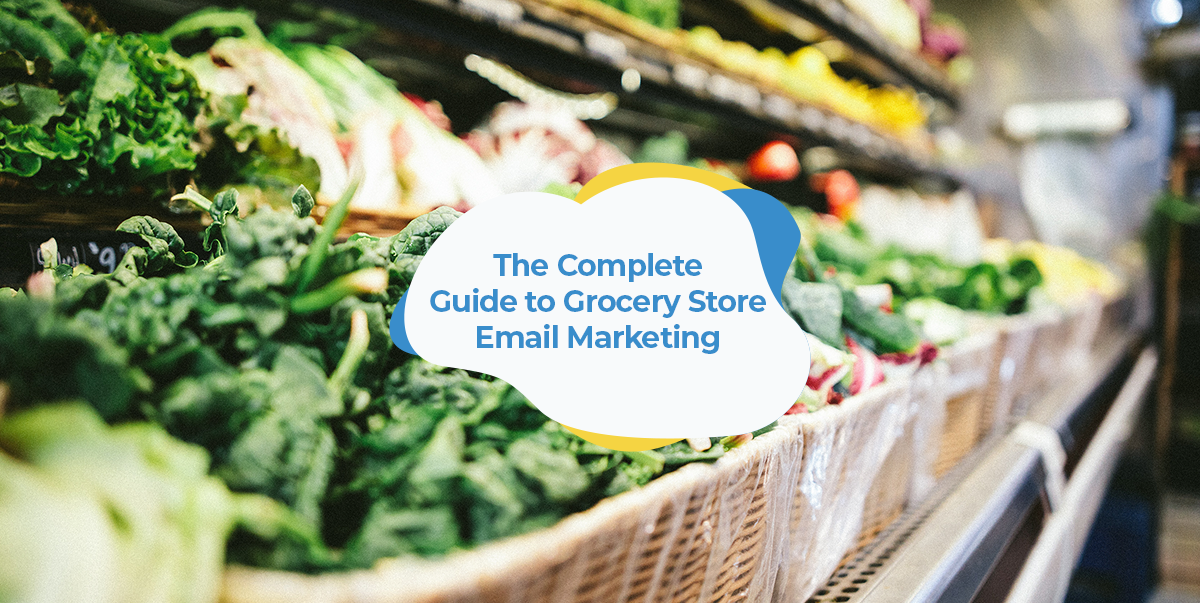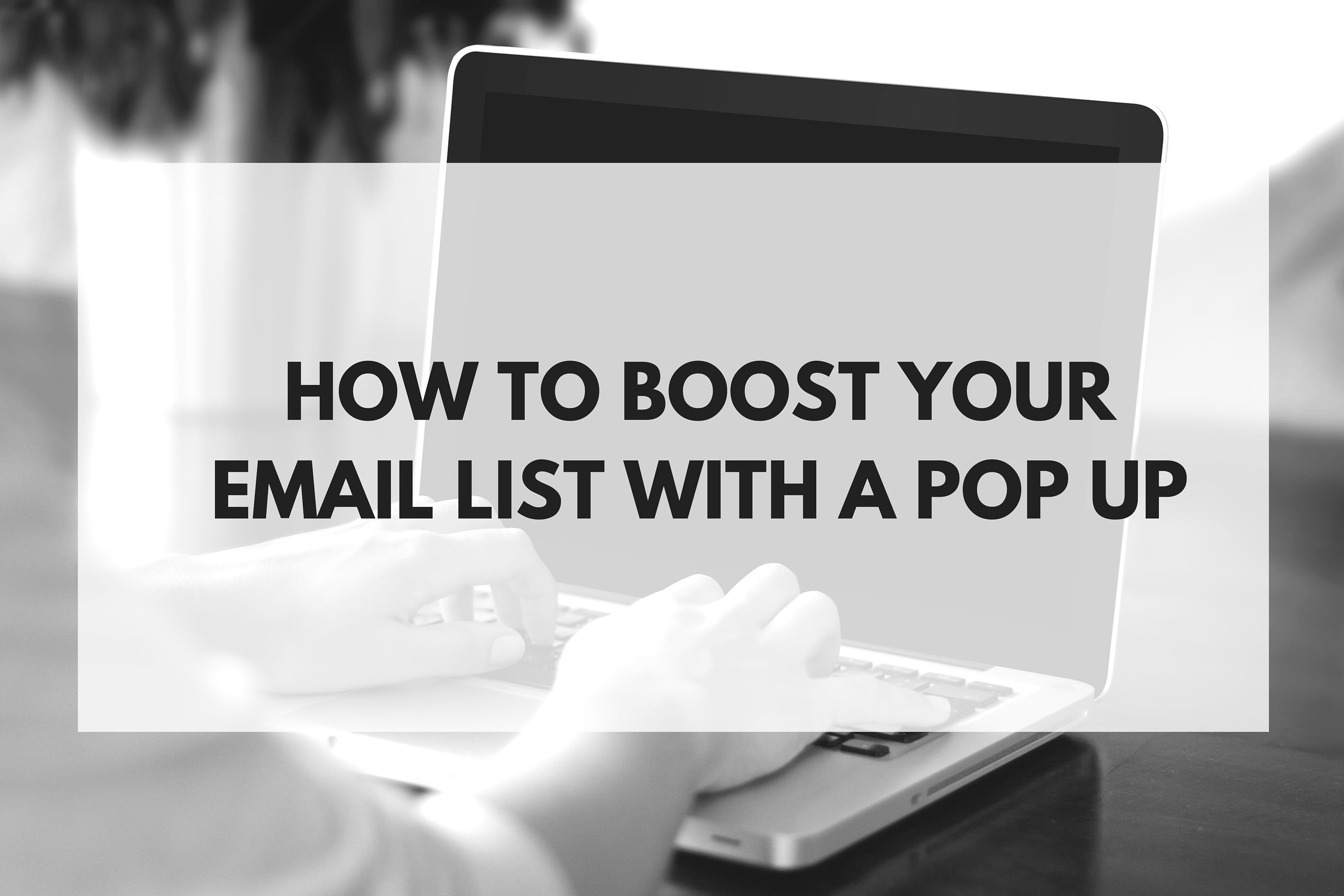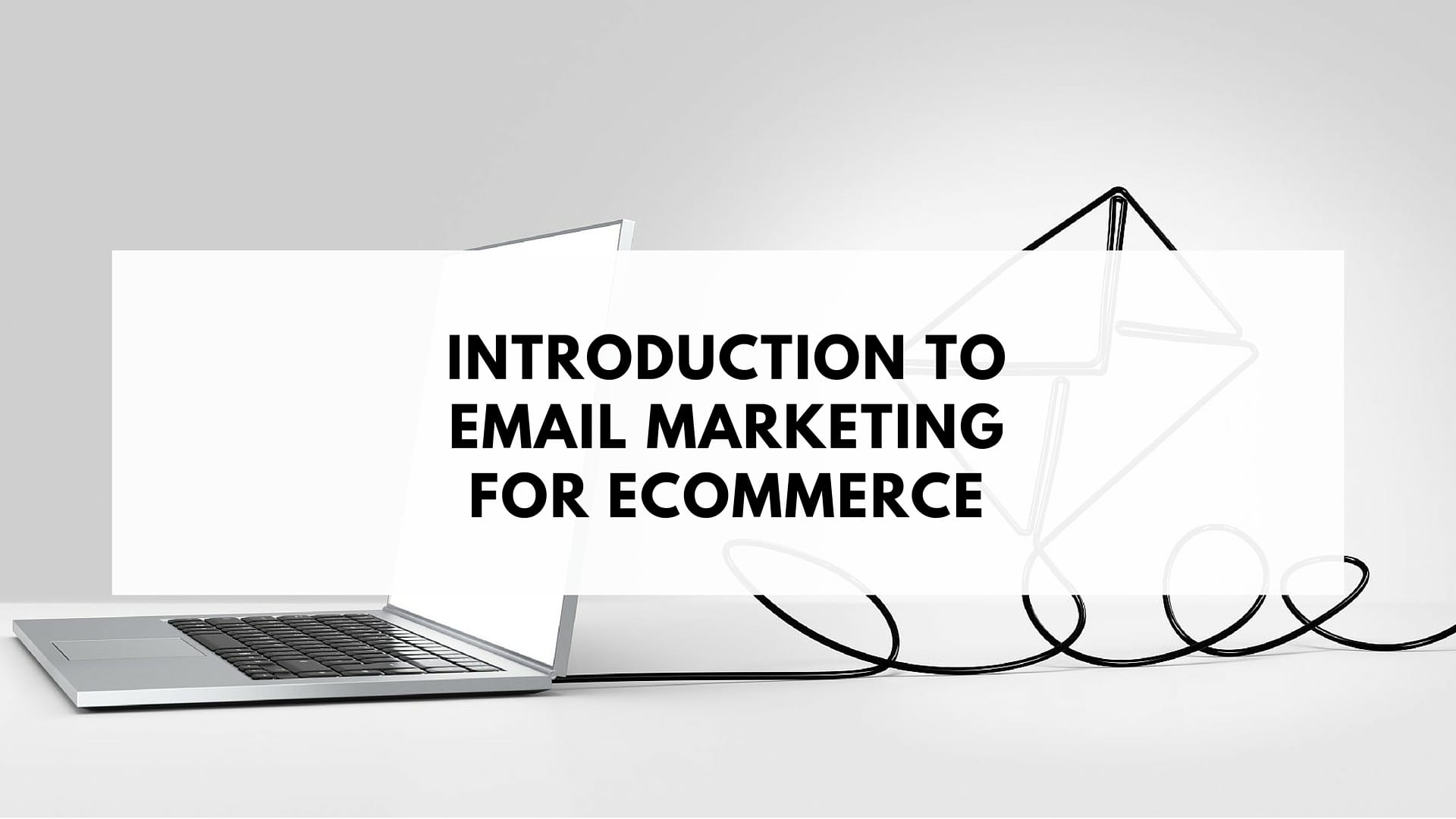It’s hard to think of a more essential kind of store than your local grocery.
Regardless of our interests, where we live or what we do, most of us will find ourselves grocery shopping at least once a week.
With such a large customer base that’s constantly returning and making purchases, grocery stores are sitting on a gold mine of consumer data to power their marketing.
And nowhere is this data more powerful than in combination with your email marketing strategy.
The problem, however, is that many grocery store marketers don’t know how to fully realize the potential of email marketing. Many don’t even use email at all.
That’s why we’ve created this guide, to take you through why email is such a powerful channel for grocery retailers, how to get started with email marketing, and provide you with a range of ideas for email content.
Grocery stores or supermarkets, who’s this guide for?
First things first, is this guide for you?
While there’s a big difference between your trendy local market selling organic produce or ‘Ma and Pa’ shop to convenience stores to large supermarkets like Costco, the fundamentals of grocery email marketing remain the same.
That said, if you’re reading this guide, you’re likely not head of marketing for a large chain supermarket.
Seeing as they also have their marketing pretty well under control, this guide is aimed towards small business grocery store owners who may not be all that familiar with email marketing.
Whether you have zero experience with email marketing or are looking for ideas on how to improve your grocery store’s marketing, this is the guide for you.
Install SmartrMail for your Grocery Store today!
? Check out our enormous range of templates with our 15 day free trial?
Why email marketing campaigns are important for grocery stores
As a grocery store marketer, you want to have a direct line of communication with your past and future customers.
Whether you’re holding a sale, announcing a new product line, or have any other news to share, you’ll want to be able to let your audience know.
To achieve this, grocery store marketing has traditionally relied on channels like outdoor advertising, flyers, and print media. While these channels are able to get the message out, their untargeted nature means that you’re wasting precious advertising dollars on reaching the wrong people.
Email, on the other hand, allows for hyper-personalized, hyper-targeted communication with customers, letting you send the right message to the right person. This makes email a much effective channel both in terms of providing a direct line of communication and return on investment.
In fact, the Direct Marketing Association study on the effectiveness of email found that for every dollar invested, an average of $43.62 in returns is generated.
People also respond favorably to emails from grocery stores.
The typical open rate across the grocery industry is 36.6%, making them almost 50% higher than the overall average for email campaigns.
Email also outperforms other digital marketing channels
Email doesn’t just outperform traditional advertising, but every digital marketing channel as well.
While social media has received plenty of attention, consumers respond better to email marketing. Over two thirds (72%) of Americans have stated they prefer hearing from businesses through email over just 17% who prefer social media.
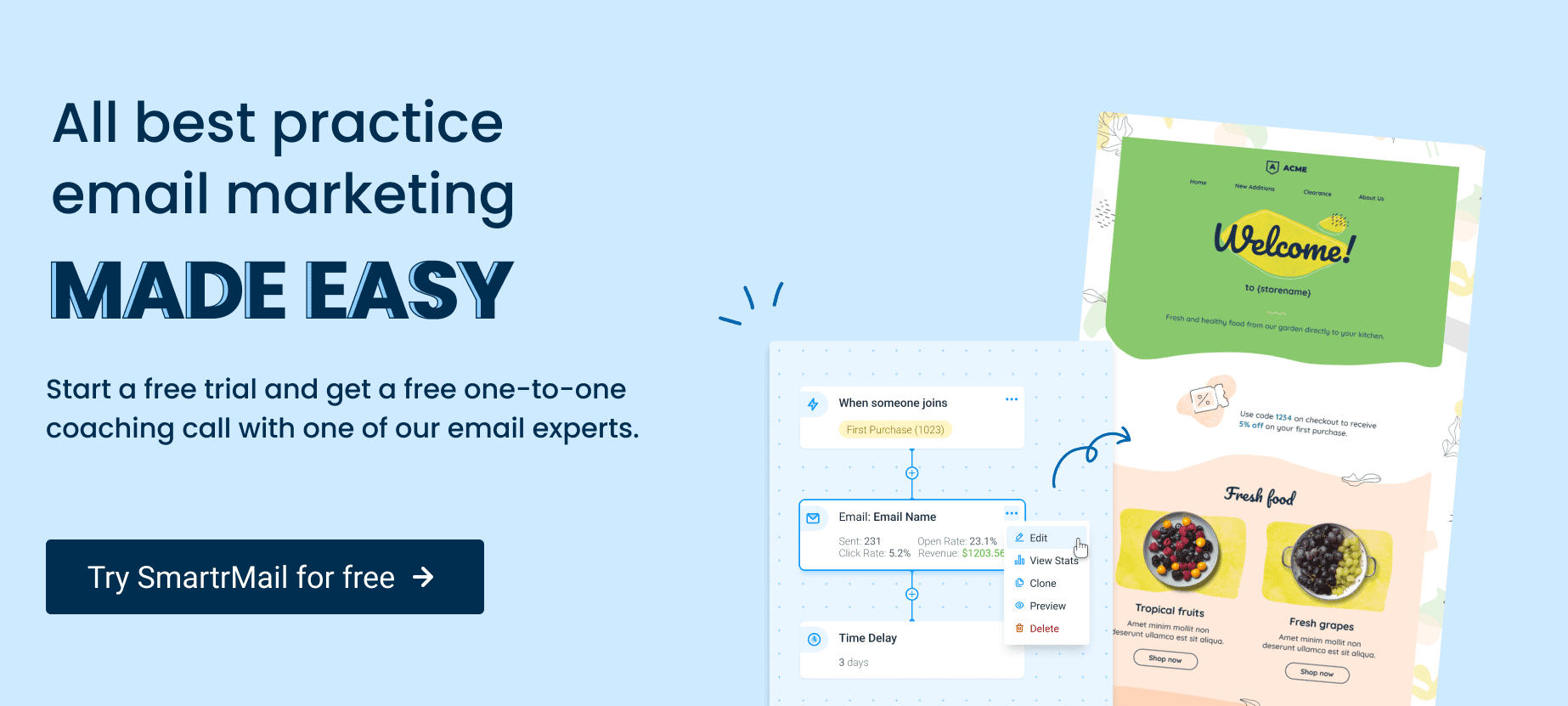
Steps to creating an email marketing strategy for your grocery store
1) Choose an email service provider (ESP)
If you’re starting out with email marketing for the first time, then the first decision is to choose an email service provider (or ESP for short). An ESP essentially just a marketing platform that lets you store your contacts, design and create emails, and send out email campaigns.
While there are plenty of options out there, including SmartrMail if you use an ecommerce platform like Shopify or WooCommerce, there are a few things you’ll want to look for:
- The ability to segment your list. That is, divide your email list into segments of people based on factors like which items they have purchased and from which product categories.
- A variety of email capture options such as popups and customizable forms.
- The ability to automate emails (which we’ll cover later) so you don’t have to manually send every email.
- The ability to integrate with the ecommerce platform you use for any online part of your store.
- Customer support, preferably with a live chat option. This is something you’ll definitely come to appreciate if you’re new to email marketing.
2) Build your email list
The first step in any email strategy is to have a list of email subscribers that you can contact. After all, there’s no point in sending beautiful emails if hardly anybody will ever see them.
When adding people to your email list, it’s important only to add people who have actively agreed to receive marketing emails from you.
Sending marketing emails to people who didn’t opt-in to your email list can constitute a violation of their privacy. This is especially true if you’re in Europe where the GDPR applies to you or if you’re in California where you’ll need to follow the CCPA.
So how do you get people to join your email list?
It’s all about your opt-in incentive.
What is an opt-in incentive?
An opt-in incentive is simply what you offer people to encourage them to sign up to your email list. For example, if you offer people a $5 coupon if they sign up to your email list, that would be your opt-in incentive.
As you can probably relate to, people already receive plenty of emails, so they tend to be selective about signing up to email lists unless they think they’re going to get value out of doing so.
This is why providing an opt-in incentive is important. It’s a way to demonstrate to people that your email list is worth signing up for.
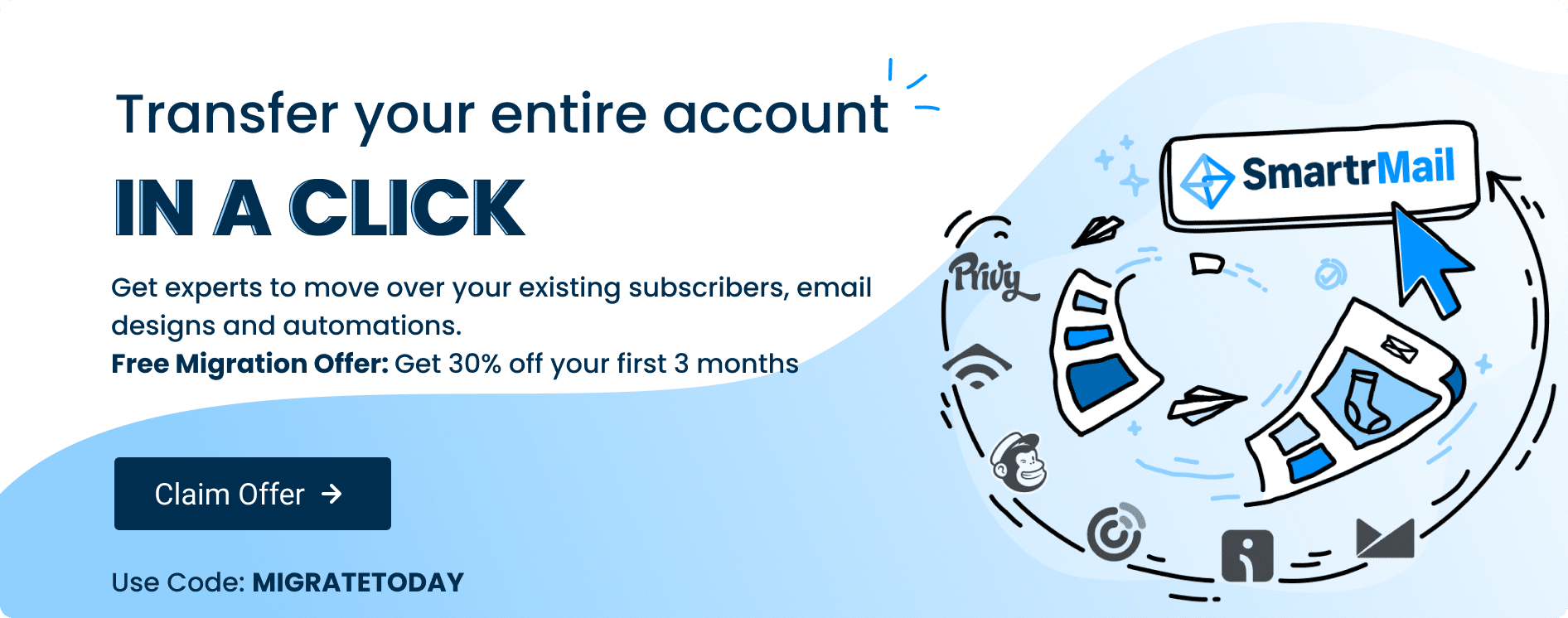
Creating an enticing opt-in incentive
So what should your opt-in incentive be?
While a $5 coupon is sure to get people signing up to your email list, there are plenty of other options that won’t cost you anywhere near as much.
It doesn’t even have to be something on monetary value.
Promising people that they’ll be the first to know about your upcoming specials is a great option for many stores as it’s something that people are interested in receiving and doesn’t require giving extra margin.
Once you’ve created an opt-in incentive that makes sense for your store, you then start letting people know about it. The more people who know about your email list and your incentive, the more people who will sign up.
To start spreading the word, you a few options:
Asking customers at checkout
The easiest way to grow your email list is simply to ask customers whether they’d like to sign up as they’re going through the checkout.
All you need to do is train your staff in letting people know about your opt-in incentive and asking whether they’d like to join your email list.
You could also offer to send people an electronic copy of their receipt if you think that’ll help convince people to sign up. Just be sure to be clear that they’re also signing up to receive marketing emails if you do this.
Sign-up to our newsletter and receive a free eBook with hidden Email Marketing Tips
Including your opt-in incentive on receipts
Receipts are already a popular way of advertising promotions whether that be on the back of them or underneath the details of the transaction.
You can also mention your email list here along with your opt-in incentive.
So that people can actually sign up, you will need to include a link to your sign up form.
Many email service providers will let you create a custom landing page for people to sign up through that you can include a link to on your receipt. Otherwise you can also embed an email signup form on an existing page and include a link to that instead.
Whether you decide to use an existing page or create a new landing page, it’s best to keep the link short and simple. Long addresses that people have to type in will only work against you in getting people to sign up.
One way to make it easy for people to sign up from their receipt is to include a QR code. Doing so means that people simply have to scan it with their phone’s camera instead of having to type in an address.
At community events
If you’re running a small local food store or sell at farmers markets, you might already be active in community events.
If so, you can use the opportunity to collect email addresses. You can even tailor your opt-in incentive to the event.
For instance, if you’re at a local farmer’s market, you could potentially talk about how your grocery store sells organic products from local farmers. You could then offer people a special on organic produce in exchange for signing up to your email list.
From your existing website traffic
If your store has its own website that receives even a small amount of traffic, it’s worth also highlighting your opt-in incentive and email list on it.
This can be done in a few ways:
- With popups that grab people’s attention when they visit your site
- Landing pages that are dedicated to explaining the value of your opt-in incentive
- Capture forms in areas like your sidebar or footer that are easy to find yet not intrusive
To learn more about growing your email list from your website traffic, check out our article on capturing email addresses of your website visitors.
Growing a healthy email list
The more you start advertising your opt-in incentive and email list, the faster you’ll start collecting email addresses.
However, keep in mind that a strong email list is not something that appears overnight. Instead, a healthy list is something that grows gradually, but consistently over time and contains people genuinely interested in receiving your emails.
It’s for this reason that it’s important to start growing your email list as soon as possible but also being careful about adding people who will get value from your emails.
If you grow your list rapidly by adding just anyone to it, people won’t engage with your emails and the effectiveness of your campaigns will suffer as a result.

3) Coming up with email marketing ideas for your grocery store
Once you’ve started building your email list, it’s time to start sending emails.
The ultimate goal of these emails are to build customer loyalty and keep people coming back to your store. To do this, you need to send engaging content.
While most stores tend to send sales-oriented emails, there are plenty of other ideas for email content you should explore sending too. Including:
New product / product line announcements
If you’ve recently added a new product or product line to your range, email is the perfect way to inform your customers.
For instance, if you now stock a new brand of breakfast cereal, you can send an email newsletter out inviting people to come in and try it. You could even offer a limited time discount exclusive to your email subscribers to further encourage customers to buy.
These types of announcement emails work particularly well with brand new products that have just launched. Especially if they’ve been advertised heavily and customers are excited to try it out.
Store announcements
Of course, product announcements aren’t the only kind of announcements that you should be emailing about. Any kind of announcement to your customers should also come in the form of an email update.
Take Coborn’s Food Store’s email informing customers about their new same day delivery option:

While we’re sure that Coborn’s also made sure to heavily advertise their new partnership with DoorDash in-store, by utilizing email marketing they’ve expanded their reach.
Inevitably, this means they will have reached customers who for whatever reason no longer come into their store.
And for these lost customers, the ability to get their groceries delivered to their door might be just what was needed to win them back.

Upcoming in-store events
Holding in-store events like tastings (free samples) and cooking demos are great general retail marketing strategies, for which email compliments well to spread the word.
So next time you decide to hold an in-store event of any kind, be sure to send an email informing your subscribers.
For larger or more significant events, it doesn’t have to be just one email either, it can be a series of several emails instead.
You can start off by announcing the event to your subscribers a month or so in advance, then send a weekly reminder email to ensure that more customers see your email and people don’t forget.
Recipe suggestions
One of the main reasons people go grocery shopping is to buy ingredients for recipes they cook at home.
This means that providing recipes or ideas for new dishes is a natural fit with grocery store marketing. Just like Lowes Foods has done in their email below.

To help ensure that people buy the ingredients from your store, you can take this a step further and provide people with a downloadable shopping list. By adding the aisle where the ingredients are located in the list, shopping for them at your store becomes the obvious choice.
If you offer online shopping, you can also experiment with providing a link to let customers add all of the ingredients to their shopping cart at once. This makes the shopping experience easier and quicker for your customer and also increases sales for you.
Seasonal / holiday shopping emails
As you’re probably already fully aware of, some of the busiest times of the year for grocery stores coincide with holidays like Thanksgiving and Christmas.
This means that there are more consumers out there looking to spend big on groceries in the lead up to these holidays.
In terms of your grocery store marketing, it means these periods represent a prime opportunity to capture people’s attention and a share of their wallets.
You can do this by providing people with a range of holiday-related content such as recipe ideas and savings on popular items for the holiday. Like Whole Foods has done in their Thanksgiving email below.

Or like how Sprouts sent a dedicated Mother’s Day email:

Savings / sale events
The most common grocery marketing emails are, of course, promotional sale announcements.
While these might not be the most engaging of emails, they do a great job at getting customers through your door and buying your products.
Including quality product imagery, highlighting the savings, and including a range of products like in the example below from Grocery Gateway will all improve the effectiveness of your email.

This is the type of newsletter that you can send on a weekly basis. All you have to do is set aside some time to add in the next week’s specials.
Avoid sending these kinds of promotional emails any more frequently otherwise you run the risk of annoying your customers and having them unsubscribe.
4) Automated email marketing
All of the emails we’ve discussed so far have been manual emails. This means you have to go in and create them everytime you want to send one.
However, the true power and efficiency of email marketing lies in the ability to automate most of your emails.
This is especially the case if you compliment your physical store with an ecommerce shop front online.
Automated emails are those that you only have to set up once and have them send out automatically.
Not only do these emails save you time (as opposed to having to go in and create a new email every time you want to send a newsletter) but they also get better engagement too. This is because they’re sent to people when they make the most sense, as we’ll see in the examples below.
Welcome emails
Welcome emails are simply emails that are sent to people immediately after joining your email list.
Often the first welcome email will be a simple message thanking the new subscriber for signing up. This is an email you should definitely set up to show your appreciation. You can check out examples of thank you emails here.
If you promised people someone upon signing up as a part of your opt-in incentive, then your first welcome is also where you should deliver on your promise.
Welcome email series usually include more than one email however, and for your grocery store marketing emails, introducing your business and what your business stands for (e.g., fresh organic produce, great selection, etc.) makes for a great welcome email. This is when your subscribers will be most engaged with your emails so take the opportunity to tell your story and turn them into regulars.
You can learn more about welcome email in this guide.
Abandoned cart emails
Abandoned shopping carts are the scourge of grocery stores and supermarkets everywhere, and it turns out abandoned carts are an even bigger problem with online shopping.

If you let your customers shop online, you will have noticed some customers adding items to their online carts but never completing the checkout process.
This is known as cart abandonment.
What might surprise you to learn is that globally, two in three customers add items to their cart only to later abandon their cart.
Thankfully however, an automatic email reminding people of their cart is enough to recover over a third of otherwise lost sales.
These are known as abandoned cart emails.
Abandoned cart emails are also very easy to enable.
Ecommerce platforms like Shopify let you enable these automatic emails in literally just a few clicks.
However, if you want more control over how these emails appear and function (such as the timing between when a customer abandons their cart and when they receive a reminder), you will need to use an email service provider that offers this functionality.
You can learn more about setting up and customizing abandoned cart emails in SmartrMail in our guide here.
Cross-sell product recommendations
Cross-selling is the act of recommending similar or complementary products based on what a customer has purchased. The go-to example is how fast food chains will ask customers whether they’d like fries and a drink with their burger.
Grocery stores are in a unique position where you have thousands of different products meaning there are plenty of potential products you can recommend.
The problem that comes with this however is that it’s impractical to set up so many recommendations.
Setting these emails up takes a few more steps than with abandoned cart emails. First you have to choose which products to recommend for a particular purchase, then you have to create an email convincing your customer why this extra purchase is worth it. Lastly, you have to set up the trigger rules in your email service provider so that the email sends automatically when the appropriate purchase is made.
To simplify things when you have a catalog of thousands of different products, you can instead make recommendations at a product category level.
For example, if you sell pet food and toys you can set up an email recommending a range of pet toys to people who purchase pet food but haven’t yet purchased any toys.
You don’t have to set up dozens of these cross-sell recommendations at once either.
You can instead start with your most lucrative products or recommendations that make the most sense and then gradually add more automation flows whenever you have the time.
You can learn more about cross-selling through email here.
Replenishment emails
As a grocor, you’ll be selling products that require regular refills, such as shampoo, pet food or razors. This makes emails that remind your customers when it’s time to replenish a great email idea.
All you have to do is identity which products people buy on a regular basis that require refilling or replacing and how long people typically wait between purchases.
Take alcohol for example. You can then set up an email automation to send to customers a month after they purchase their liquor prompting them to place a new order. Just like in the email below from MyDan’s.

Just like cross-sell emails, you’ll have plenty of products you can potentially set up these automations for. Instead of setting them all up at once, you can also start with the few that make the most sense for you and slowly add more automations when you have time.
You can learn how to set up replenishment emails in SmartrMail in our guide here.
Back in stock notifications
Wouldn’t it be great if when customers are shopping online and they come across a product that’s out of stock, they’re able to sign up for an email notification informing them as soon as the product is back in stock?
This is exactly what back in stock notifications are.
They are simply emails sent to people who have expressed an interest in a particular product that was not in stock.
They are also very easy to set up with an app like Back In Stock if your online store is built on Shopify. There are also other options if you’re on a different ecommerce platform such as WooCommerce or BigCommerce.
Winback emails
As with any business, it’s inevitable that some of your customers are going to go cold and stop purchasing from your store.
Thankfully, winback emails are the perfect email automation to bring these customers back to your store.
As the name suggests, these emails attempt to ‘win back’ customers by sending when a customer hasn’t made a purchase in a certain period of time.
For example, if a particular customer hasn’t made a purchase in a month, then a winback email is triggered.
Just like in the example below, these emails typically contain a special offer or message to entice the customer back.

You can view more examples of winback emails here. You can also learn how to set up winback emails in SmartrMail in our guide here.
Grocery store email examples
Now that you have a solid understanding of the fundamentals of grocery email marketing, it’s worthwhile to check out some more examples of great grocery marketing emails.
Trader Joe’s monthly newsletter

4th of July grocery email

Christmas email from Meatsmith

Weekly specials from Coles

Recipe suggestions from Meatsmith

Conclusion
With such a large product range and amount of customer data, grocery stores are uniquely positioned to take advantage of email marketing and see an impressive return.
As we’ve seen, getting started with email marketing is also straightforward.
Email marketing essentially comes down to three main things: collecting subscribers, setting up automations, and sending engaging content.
Once you’ve started collecting subscribers and have your automations set up, all you have to do going forward is your weekly newsletter.
So if you haven’t already, it’s time to get started with email marketing.

